.
| Greenland
Kalaallit Nunaat
| ||||||
|---|---|---|---|---|---|---|
| ||||||
| Anthem: Nunarput utoqqarsuanngoravit (Kalaallisut) | ||||||
|
| ||||||
| Capital and largest city | 64°10′N 51°44′W | |||||
| Official languages | Greenlandic (Kalaallisut)[a] | |||||
| Other languages | Danish[a] | |||||
| Ethnic groups |
| |||||
| Demonym |
| |||||
| Government | Parliamentary democracywithin a constitutional monarchy | |||||
| - | Queen | Margrethe II | ||||
| - | High Commissioner | Mikaela Engell | ||||
| - | Prime Minister | Aleqa Hammond | ||||
| - | Speaker of theInatsisartut | Lars Emil Johansen | ||||
| Legislature | Inatsisartut | |||||
| Autonomy within the Kingdom of Denmark | ||||||
| - | Norwegian sovereignty[b] | 1261 | ||||
| - | Contact re-established | 1721 | ||||
| - | Ceded to Denmark[c] | 14 January 1814 | ||||
| - | Amt status | 5 June 1953 | ||||
| - | Home rule | 1 May 1979 | ||||
| - | Further autonomy and self rule | 21 June 2009[1][2] | ||||
| Area | ||||||
| - | Total | 2,166,086 km2 (12th) 836,109 sq mi | ||||
| - | Water (%) | 83.1[d] | ||||
| Population | ||||||
| - | 2013 estimate | 56,370[3] | ||||
| - | Density | 0.026/km2 (242nd) 0.069/sq mi | ||||
| GDP (PPP) | 2011 estimate | |||||
| - | Total | 11.59 billion kr.[3] (n/a) | ||||
| - | Per capita | 37,009.047 USD (n/a) | ||||
| HDI (2008) | 0.869[4] very high · 76th | |||||
| Currency | Danish krone (DKK) | |||||
| Time zone | (UTC+0 to −4) | |||||
| Drives on the | right | |||||
| Calling code | +299 | |||||
| ISO 3166 code | GL | |||||
| Internet TLD | .gl | |||||
| a. | ^ Greenlandic has been the sole official language of Greenland since 2009.[1][5] | |||||
| b. | ^ Danish monarchy reached Greenland in 1380 with the reign of Olav IV in Norway. | |||||
| c. | ^ Although previously under Danish monarchy for four hundred years, Greenland, the Faroe Islands, and Icelandwere formally Norwegian possessions until 1814. | |||||
| d. | ^ As of 2000: 410,449 km2 (158,475 sq mi) ice-free; 1,755,637 km2 (677,855 sq mi) ice-covered. Density: 0.14/km2 (0.36 /sq. mi) for ice-free areas. | |||||
Greenland (Greenlandic: Kalaallit Nunaat [kaˈlaːɬit ˈnunaːt]) is an autonomous country within the Kingdom of Denmark, located between theArctic and Atlantic Oceans, east of the Canadian Arctic Archipelago. Though physiographically a part of the continent of North America, Greenland has been politically and culturally associated with Europe (specifically Norway and later Denmark) for more than a millennium.[6] In 2008, the people of Greenland passed a referendum supporting greater autonomy; 75% of votes cast were in favour. Greenland is, in terms of area, the world's largest island,[7] over three-quarters of which is covered by the only contemporary ice sheet outside of Antarctica. With a population of 56,370[3] (2013), it is the least densely populated country in the world.[8]
Greenland has been inhabited off and on for at least the last 4,500 years by Arctic peoples whose forebears migrated there from Canada.[9]Norsemen settled on the uninhabited southern part of Greenland beginning in the 10th century. Inuit peoples arrived in the 13th century. The Norse colonies disappeared in the late 15th century. In the early 18th century, Scandinavia and Greenland came back into contact with each other, and Denmark established sovereignty over the island.
Having been ruled by Denmark–Norway for centuries, Greenland (Danish: Grønland) became a Danish colony in 1814, and a part of the Danish Realm in 1953 under the Constitution of Denmark. In 1973, Greenland joined the European Economic Community with Denmark. However, in areferendum in 1983, a majority of the population voted for Greenland to withdraw from the EEC, and Greenland officially withdrew in 1985. In 1979, Denmark granted home rule to Greenland, and in 2008, Greenlanders voted in favour of the Self-Government Act which transferred more power from the Danish royal government to the local Greenlandic government. Under the new structure, in effect since 21 June 2009,[10]Greenland can gradually assume responsibility for policing, judicial system, company law, accounting and auditing; mineral resource activities; aviation; law of legal capacity, family law and succession law; aliens and border controls; the working environment; and financial regulation and supervision. The Danish government retains control of foreign affairs and national defence. It also retains control of monetary policy, providing an initial annual subsidy of DKK 3.4 billion, slated to diminish gradually over time as Greenland's economy is strengthened by increased income from the extraction of natural resources.
Contents
[hide]Etymology[edit]
It was the early Scandinavian settlers who gave the country the name Greenland. In the Icelandic sagas, it is said that the Norwegian-born Icelander Erik the Red was exiled from Iceland for murder. Along with his extended family and his thralls, he set out in ships to explore icy land known to lie to the northwest. After finding a habitable area and settling there, he named it Grœnland (translated as "Greenland"), supposedly in the hope that the pleasant name would attract settlers.[11][12][13]
The name of the country in Greenlandic (Kalaallisut) is Kalaallit Nunaat ("land of the Kalaallit").[14] The Kalaallit are the indigenous Greenlandic Inuit people who inhabit the country's western region.
History[edit]
Main article: History of Greenland
Early Paleo-Eskimo cultures[edit]
In prehistoric times, Greenland was home to several successive Paleo-Eskimo cultures known primarily through archaeological finds. The earliest entry of the Paleo-Eskimo into Greenland is thought to have occurred about 2500 BC. From around 2500 BC to 800 BC, southern and western Greenland was inhabited by the Saqqaq culture. Most finds of Saqqaq-period archaeological remains have been around Disko Bay. From 2400 BC to 1300 BC, the Independence I culture existed in northern Greenland. It was a part of the Arctic small tool tradition.[15][16]Towns, including Deltaterrasserne, started to appear.
Around 800 BC, the Saqqaq culture disappeared and the Early Dorset culture emerged in western Greenland and the Independence II culture in northern Greenland. The Dorset culture was the first culture to extend throughout the Greenlandic coastal areas, both on the west and east coasts, and it lasted until the total onset of the Thule culture in 1500 AD. The Dorset culture population lived primarily from whale hunting. The Thule culture people are the ancestors of the current Greenlandic population. They started migrating from Alaska around 1000 AD, reaching Greenland around 1300 AD. The Thule culture was the first to introduce to Greenland such technological innovations as dog sleds and toggling harpoons.
Norse settlement[edit]
From 986 AD, Greenland's west coast was settled by Icelanders and Norwegians in two settlements on fjords near the southwestern-most tip of the island.[6] They shared the island with the late Dorset culture inhabitants who occupied the northern and western parts, and later with the Thule culture arriving from the north. Norse Greenlanders submitted to Norwegian rule in the 13th century, and the kingdom of Norway entered into a personal union with Denmark in 1380, and from 1397 was a part of the Kalmar Union.[17]
The settlements, such as Brattahlíð, thrived for centuries but disappeared sometime in the 15th century, perhaps at the onset of the Little Ice Age.[18]Apart from some runic inscriptions, no contemporary records or historiography survives from the Norse settlements. Icelandic saga accounts of life in Greenland were composed in the thirteenth century and later, and do not constitute primary sources for the history of early Greenland.[19] Modern understanding therefore depends on the physical data. Interpretation of ice core and clam shell data suggests that between 800 and 1300 AD, the regions around the fjords of southern Greenland experienced a relatively mild climate several degrees Celsius higher than usual in the North Atlantic,[20]with trees and herbaceous plants growing and livestock being farmed. Barley was grown as a crop up to the 70th parallel.[21] What is verifiable is that the ice cores indicate Greenland has experienced dramatic temperature shifts many times over the past 100,000 years.[22] Similarly the Icelandic Book of Settlements records famines during the winters in which "the old and helpless were killed and thrown over cliffs". (Arnold 2010)
These Icelandic settlements vanished during the 14th and 15th centuries, probably as a result of famine and increasing conflicts with the Inuit.[23] The condition of human bones from this period indicates that the Norse population was malnourished, probably due to soil erosion resulting from the Norsemen's destruction of natural vegetation in the course of farming, turf-cutting, and wood-cutting, pandemic plague, a decline in temperatures during the Little Ice Age, and armed conflicts with the Inuit.[18]
1500–1814[edit]
In 1500, King Manuel I of Portugal sent Gaspar Corte-Real to Greenland in search of a Northwest Passage to Asia which, according to the Treaty of Tordesillas, was part of the Portuguese area of influence. In 1501, Corte-Real returned with his brother, Miguel Corte-Real. Finding the sea frozen, they headed south and arrived in Labrador and Newfoundland. Upon the brothers' return to Portugal, the cartographic information supplied by Corte-Real was incorporated into a new map of the world which was presented to Ercole I d'Este,Duke of Ferrara, by Alberto Cantino in 1502. The Cantino planisphere, made in Lisbon, accurately depicts the southern coastline of Greenland.[24]
In 1605–1607, King Christian IV of Denmark sent a series of expeditions to Greenland and Arctic waterways to locate the lost eastern Norse settlement and assert Danish sovereignty over Greenland. The expeditions were mostly unsuccessful, partly due to leaders who lacked experience with the difficult arctic ice and weather conditions, and partly because the expedition leaders were given instructions to search for the Eastern Settlement on the east coast of Greenland just north of Cape Farewell, which is almost inaccessible due to southward drifting ice. The pilot on all three trips was English explorer James Hall.
After the Norse settlements died off, the area came under the de facto control of various Inuit groups, but the Danish government never forgot or relinquished the claims to Greenland that it had inherited from the Norwegians; and when contact with Greenland was re-established in the early 18th century, Denmark asserted its sovereignty over the island. In 1721, a joint mercantile and clerical expedition led by Danish-Norwegian missionary Hans Egede was sent to Greenland, not knowing whether a Norse civilization remained there. The expedition can be seen as part of the Danish colonization of the Americas. After 15 years in Greenland, Hans Egede left his son Paul Egede in charge of the mission in Greenland and returned to Denmark where he established a Greenland Seminary. This new colony was centred at Godthåb("Good Hope") on the southwest coast. Gradually, Greenland was opened up to Danish merchants, and closed to those from other countries.
Treaty of Kiel to World War II[edit]
When the union between the crowns of Denmark and Norway was dissolved in 1814, the Treaty of Kiel severed Norway's former colonies and left them under the control of the Danish monarch.
Norway occupied then-uninhabited eastern Greenland as Erik the Red's Land in July 1931, claiming that it constituted terra nullius. Norway and Denmark agreed to submit the matter in 1933 to the Permanent Court of International Justice, which decided against Norway.[25]
Greenland's connection to Denmark was severed on 9 April 1940, early in World War II, when Denmark was occupied by Nazi Germany. On 8 April 1941, the United States occupied Greenland to defend it against a possible invasion by Germany.[26] The United States occupation of Greenland continued until 1945. Greenland was able to buy goods from the United States and Canada by selling cryolite from the mine at Ivittuut. The major air bases were Bluie West-1 at Narsarsuaq and Bluie West-8 at Søndre Strømfjord (Kangerlussuaq), both of which are still used as Greenland's major international airports. During this war, the system of government changed: Governor Eske Brun ruled the island under a law of 1925 that allowed governors to take control under extreme circumstances; Governor Aksel Svane was transferred to the United States to lead the commission to supply Greenland. The Danish Sirius Patrol guarded the northeastern shores of Greenland in 1942 using dogsleds, detecting several German weather stationsand alerting American troops who then destroyed them. After the collapse of the Third Reich, Albert Speer briefly considered escaping in a small aeroplane to hide out in Greenland, but changed his mind and decided to turn himself in to the United States Armed Forces.[27]
Greenland had been a protected and very isolated society until 1940. The Danish government had maintained a strict monopoly of Greenlandic trade, allowing only small scale troaking with Scottish whalers. Nevertheless, wartime Greenland developed a sense of self-reliance through self-government and independent communication with the outside world. Despite this change, in 1946 a commission including the highest Greenlandic council, theLandsrådene, recommended patience and no radical reform of the system. Two years later, the first step towards a change of government was initiated when a grand commission was established. A final report (G-50) was presented in 1950: Greenland was to be a modern welfare state with Denmark as sponsor and example. In 1953 Greenland was made an equal part of the Danish Kingdom. Home rule was granted in 1979.
Home rule and self-rule[edit]
Following World War II, the United States developed a geopolitical interest in Greenland, and in 1946 the United States offered to buy Greenland from Denmark for $100,000,000, but Denmark refused to sell.[28][29] However, in 1950, Denmark did agree to allow the United States to reestablish Thule Air Base, which was greatly expanded between 1951 and 1953 as part of a unified NATO Cold War defence strategy. The local population of three nearby villages was moved over 100 kilometres (62 mi) away in the winter. A secret attempt to construct a subterranean network of nuclear missile launch sites in the Greenlandic ice cap named Project Iceworm was carried out from Camp Century from 1960 to 1966 before being abandoned as unworkable. The Danish government did not become aware of the programme's actual mission until 1997, when it was discovered while looking for records related to the crash of a nuclear-equipped B-52 bomber at Thule in 1968.
With the 1953 Danish constitution, Greenland's colonial status ended as the island was incorporated into the Danish realm as an amt (county), also extending Danish citizenship to Greenlanders. This also resulted in a change in Danish policies toward Greenland that consisted of a strategy of cultural assimilation—or de-Greenlandification. During this period, the Danish government promoted the exclusive use of Danish in official matters, and required Greenlanders to go to Denmark for their post-secondary education; many Greenlandic children grew up in boarding schools in southern Denmark, many losing their cultural ties to Greenland. While the policies "succeeded" in the sense of creating a demographic shift turning Greenlanders from being primarily subsistence hunters into being urbanized wage earners, the policy also backfired to produce a reassertion of Greenlandic cultural identity by the Greenlandic elite, leading to a movement in favour of independence that reached its peak in the 1970s.[30] As a consequence of political complications in relation to Denmark's entry into the European Common Market in 1972, a further desire to establish the legality of Greenland's status formed in Denmark, resulting in the Home Rule Act of 1979, which gave Greenland limited autonomy with its own legislature taking control of some internal policies, while the Parliament of Denmark maintained full control of external policies, security, and natural resources. The law came into effect on 1 May 1979. The Queen of Denmark, Margrethe II, remains Greenland's Head of state. In 1985, Greenland left the European Economic Community(EEC) upon achieving self-rule, in view of the EEC's commercial fishing regulations and an EEC ban on seal skin products.[31] A referendum on greater autonomy was approved on 25 November 2008.[32][33]
On 21 June 2009, Greenland assumed self-determination with responsibility for self-government of judicial affairs, policing, and natural resources. Also, Greenlanders were recognized as a separate people under international law.[34] Denmark maintains control of foreign affairs and defence matters. Denmark upholds the annual block grant of 3.2 billion Danish kroner, but as Greenland begins to collect revenues of its natural resources, the grant will gradually be diminished. It is considered by some to be a step toward eventual full independence from Denmark.[35]Greenlandic became the sole official language of Greenland at the historic ceremony.[1][5][36][37][38]
Government[edit]
Main article: Politics of Greenland
Greenland's head of state is Margrethe II, Queen regnant of Denmark. The Queen's government in Denmark appoints a High Commissioner (Rigsombudsmand) to represent it on the island. The current commissioner is Mikaela Engell.
Greenlanders elect two representatives to the Folketing, Denmark's parliament, out of 179 total. The current representatives are Sara Olsvig of the Inuit Community Party and Doris Jakobsen from the Siumut Party from the Forward Party.
Greenland also has its own Parliament, which has 31 members. The government is the Naalakkersuisut whose members are appointed by the Prime Minister. The head of government is thePrime Minister, usually the leader of the majority party in Parliament. The current Prime Minister is Aleqa Hammond of the Siumut Party.
Administrative divisions[edit]
Main article: Administrative divisions of Greenland
Although it is largely unpopulated, Greenland abolished its three counties in 2009 and has since been divided into four territories known as "municipalities": Sermersooq ("Much Ice") around the capital Nuuk; Kujalleq ("South") around Cape Farewell; Qeqqata ("Centre") north of the capital along the Davis Strait; and Qaasuitsup ("Darkness") in the northwest. The northeast of the island composes the unincorporated Northeast Greenland National Park. Thule Air Base is also unincorporated, an enclave within Qaaquitsup municipality administered by the United States Air Force. During its construction, there were as many as 12,000 American residents but in recent years the number is below 1,000.
Politics[edit]
Main article: List of political parties in Greenland
The party system is currently dominated by the social democratic Forward Party (14 MPs), and the democratic socialist Inuit Community Party (11 MPs), both of which broadly argue for greater independence from Denmark. While the 2009 election saw the unionist—and largely Danish—Democrat Party (2 MPs) decline greatly, the 2013 election consolidated the power of the two main parties at the expense of the smaller groups, and saw the far-left Inuit Party (2 MPs) elected to the Parliament for the first time.
The non-binding 2008 referendum on self-governance favoured increased self-governance 21,355 votes to 6,663.
In 1985, Greenland left the European Economic Community (EEC), unlike Denmark, which remains a member. The EEC later became the European Union (EU, it was renamed and expanded in scope in 1992). Greenland retains some ties with the EU via Denmark. However, EU law largely does not apply to Greenland except in the area of trade.
Economics and business[edit]
| This section does not cite any references or sources. (September 2013) |
About half of public spending on Greenland is funded by block grants from Denmark which in 2007 totalled over 3.2 billion kr. Additional proceeds from the sale of fishing licences and the annual compensation from the EU represents 280 million DKK per year. Greenland's economy is based on a narrow professional basis with the fishing industry as the dominant sector with some 90% of its exports. In a few years, quarrying and tourism could complement the fisheries that depend on the changing prices of fish and fishing opportunities. The long-range divides the domestic market into many small units that have high operating costs. Most of the fish factories are owned by Royal Greenland.
Geography and climate[edit]
Main article: Geography of Greenland
See also: Administrative divisions of Greenland, Territorial claims in the Arctic, Climate change in the Arctic, and Climate of the Arctic#Greenland
Greenland lies between latitudes 59° and 83°N, and longitudes 11° and 74°W and is the third largest country in North America.[39] The Atlantic Ocean borders Greenland's southeast; the Greenland Sea is to the east; the Arctic Ocean is to the north; and Baffin Bay is to the west. The nearest countries are Canada, to the west across Baffin Bay, and Iceland, east of Greenland in the Atlantic Ocean. Greenland also contains the world's largest national park, and is the world's largest island and the largest dependent territory by area in the world.
The average daily temperature of Nuuk, Greenland varies over the seasons from −8 to 7 °C (18 to 45 °F).
The total area of Greenland is 2,166,086 km2 (836,330 sq mi) (including other offshore minor islands), of which theGreenland ice sheet covers 1,755,637 km2 (677,855 sq mi) (81%) and has a volume of approximately 2,850,000 km3(680,000 cu mi).[40] The highest point on Greenland is Gunnbjørn Fjeld at 3,700 m (12,139 ft). The majority of Greenland, however, is less than 1,500 m (4,921 ft) in elevation.
The weight of the ice sheet has depressed the central land area to form a basin lying more than 300 m (984 ft) below sea level,[41][42] while elevations rise suddenly and steeply near the coast.[43] The ice flows generally to the coast from the centre of the island. A survey led by French scientist Paul-Emile Victor in 1951 concluded that, under the ice sheet, Greenland is composed of three large islands.[44] This is disputed, but if it is so, they would be separated by narrow straits, reaching the sea at Ilulissat Icefjord, at Greenland's Grand Canyon and south of Nordostrundingen.
All towns and settlements of Greenland are situated along the ice-free coast, with the population being concentrated along the west coast. The northeastern part of Greenland is not part of any municipality, but is the site of the world's largest national park, Northeast Greenland National Park.[45]
At least four scientific expedition stations and camps had been established on the ice sheet in the ice-covered central part of Greenland (indicated as pale blue in the map to the right): Eismitte, North Ice, North GRIP Camp and The Raven Skiway. Currently, there is a year-round station, Summit Camp, on the ice sheet, established in 1989. The radio station Jørgen Brønlund Fjord was, until 1950, the northernmost permanent outpost in the world.
The extreme north of Greenland, Peary Land, is not covered by an ice sheet, because the air there is too dry to produce snow, which is essential in the production and maintenance of an ice sheet. If the Greenland ice sheet were to melt away completely, the world's sea level would rise by more than 7 m (23 ft).[46]
Between 1989 and 1993, US and European climate researchers drilled into the summit of Greenland's ice sheet, obtaining a pair of 3 km (1.9 mi) long ice cores. Analysis of the layering and chemical composition of the cores has provided a revolutionary new record of climate change in the Northern Hemisphere going back about 100,000 years, and illustrated that the world's weather and temperature have often shifted rapidly from one seemingly stable state to another, with worldwide consequences.[47] The glaciers of Greenland are also contributing to a rise in the global sea level at a faster rate than was previously believed.[48] Between 1991 and 2004, monitoring of the weather at one location (Swiss Camp) showed that the average winter temperature had risen almost 6 °C (11 °F).[49] Other research has shown that higher snowfalls from the North Atlantic oscillation caused the interior of the ice cap to thicken by an average of 6 cm or 2.36 in/yr between 1994 and 2005.[50]
However, a recent study suggests a much warmer planet in relatively recent geological times:
Scientists who probed 2 km (1.2 mi) through a Greenland glacier to recover the some of the oldest plant DNA on record said that the planet was far warmer hundreds of thousands of years ago than is generally believed. DNA of trees, plants, and insects including butterflies and spiders from beneath the southern Greenland glacier was estimated to date to 450,000 to 900,000 years ago, according to the remnants retrieved from this long-vanished boreal forest. That view contrasts sharply with the prevailing one that a lush forest of this kind could not have existed in Greenland any later than 2.4 million years ago. These DNA samples suggest that the temperature probably reached 10 °C (50 °F) in the summer and −17 °C (1.4 °F) in the winter. They also indicate that during the last interglacial period, 130,000–116,000 years ago, when local temperatures were on average 5 °C (9 °F) higher than now, the glaciers on Greenland did not completely melt away.[51]
In 1996, the American Top of the World expedition found the world's northernmost island off Greenland:ATOW1996. An even more northerly candidate was spotted during the return from the expedition, but its status is yet to be confirmed.
In 2007 the existence of a new island was announced. Named "Uunartoq Qeqertaq" (English: Warming Island), this island has always been present off the coast of Greenland, but was covered by a glacier. This glacier was discovered in 2002 to be shrinking rapidly, and by 2007 had completely melted away, leaving the exposed island.[52] The island was named Place of the Year by the Oxford Atlas of the World in 2007.[53] Ben Keene, the atlas's editor, commented: "In the last two or three decades, global warming has reduced the size of glaciers throughout the Arctic and earlier this year, news sources confirmed what climate scientists already knew: water, not rock, lay beneath this ice bridge on the east coast of Greenland. More islets are likely to appear as the sheet of frozen water covering the world's largest island continues to melt".[this quote needs a citation]
Some controversy surrounds the history of the island, specifically over whether the island might have been revealed during a brief warm period in Greenland during the mid-20th century.[54]
See also: Greenland's Grand Canyon
Postglacial glacier advances[edit]
| This section may be too technical for most readers to understand. (August 2013) |
The Qaqugdluit mountainous area on the south side of Nuussuaq Peninsula at 70°8′N 51°44′W shows Historical to Holocene Post-glacial glacier stages dating back at least 7,000 and at most 10,000 years.[55][56] In 1979 the glaciers ended between 660m and 140m (2,165 and 459 ft) above sea level. The pertinent climatic glacier- snowline (ELA) ran at c. 800m (2,625 ft) in height. The snowline of the oldest (VII) of the three Holocene glacier stages (V – VII) ran c. 230m (755 ft) deeper, i.e. at c. 570m (1,870 ft) in height.[57] The four youngest glacier stages (IV-I) are of a Historical age. They have to be classified as belonging to the global glacier advances in the years 1811 to 1850 and 1880 to 1900 (“Little Ice Age”), 1910 to 1930, 1948 and 1953.[56] Their snowlines rose step by step up to the level of 1979. The current snowline (Stage 0) runs nearly unchanged. During the oldest Postglacial Stage VII an ice-stream-network from valley glaciers joining each other, has completely covered the landscape. Its nourishing areas consisted of high-lying plateau-glaciers and local ice caps. Due to the uplift of the snowline about that c. 230m (755 ft) – what corresponds to a warming about c. 1.5°C (34.7°C) –, since 1979 there merely exists a plateau- glaciation with small glacier tongues hanging down on the margins that nearly did not reach the main valley bottoms any more.[57]
Nature[edit]
| This section does not cite any references or sources. (June 2013) |
The few land mammals in Greenland include polar bear, reindeer, musk ox, arctic fox, wolf, stoat, and arctic hare. There are dozens of species of seals and whales along the coast.
Over 100 species of birds have been seen, and around 50 breed in Greenland.
Economy[edit]
Main article: Economy of Greenland
Greenland today is dependent on fishing and fish exports. The shrimp and fish industry is by far the largest income earner.[58] Despite resumption of several hydrocarbon and mineral exploration activities, it will take several years before hydrocarbon production can materialize. The state oil companyNunaoil was created to help develop the hydrocarbon industry in Greenland. The state company Nunamineral has been launched on the Copenhagen Stock Exchange to raise more capital to increase the production of gold, started in 2007.
Mining of ruby deposits began in 2007. Other mineral prospects are improving as prices are increasing. These include iron, uranium, aluminium, nickel,platinum, tungsten, titanium, and copper.
Electricity has traditionally been generated by oil or diesel power plants, even if there is a large surplus of potential hydropower. Because of rising oil prices, there is a programme to build hydro power plants. The first, and still the largest, is Buksefjord hydroelectric power plant.
There are also plans to build a large aluminium smelter, using hydropower to create an exportable product. It is expected that much of the labour needed will be imported.[59]
The European Union has urged the Denmark protectorate Greenland to restrict People's Republic of China development of rare-earth projects, as China accounts for 95 percent of the world's current supply. In early 2013, the Greenland government said that it had no plans to impose such restrictions.[60]
The public sector, including publicly owned enterprises and the municipalities, plays a dominant role in Greenland's economy. About half the government revenues come from grants from the Danish government, an important supplement to the gross domestic product (GDP). Gross domestic product per capita is equivalent to that of the average economies of Europe.
Greenland suffered an economic contraction in the early 1990s. But, since 1993, the economy has improved. The Greenland Home Rule Government (GHRG) has pursued a tight fiscal policy since the late 1980s, which has helped create surpluses in the public budget and low inflation. Since 1990, Greenland has registered a foreign trade deficit following the closure of the last remaining lead and zinc mine that year. More recently, new sources ofruby in Greenland have been discovered, promising to bring new industry and a new export to the country. (See Gemstone industry in Greenland).
Transportation[edit]
Main articles: Transport in Greenland and List of airports in Greenland
Air transportation exists both within Greenland and between the island and other nations. There is also scheduled boat traffic, but the long distances lead to long travel times and low frequency. There are no roads between cities because the coast has many fjords that would require ferry service to connect a road network,[citation needed] Also the lack of agriculture, forestry and similar countryside activities has meant that very few countryside roads have been built.
Kangerlussuaq Airport around 100 km (60 miles) from the west coast is the major airport of Greenland and the hub for domestic flights. Intercontinental flights connect mainly to Copenhagen.
In May 2007, Air Greenland initiated a seasonal route to and from Baltimore in the United States,[61] but on 10 March 2008, the route was cancelled because of financial losses.[62] In 2012, Air Greenland commenced seasonal, biweekly flights between Nuuk and Iqaluit.[63] Working in tandem with First Air passengers can then continue to Ottawa.[64] Air Iceland began operating a twice-weekly Keflavík-Ilulissat route in July 2009.[65] In addition to these routes there are scheduled international flights between Narsarsuaq and Copenhagen. Air Iceland operates routes between Reykjavík and Narsarsuaq, Ilulissat, Nuuk on the west coast and Kulusuk, Ittoqqortoormiit on the east coast.
Sea passenger and freight transport is served by the coastal ferries operated by Arctic Umiaq Line. It makes a single round trip per week, taking 80 hours each direction.
Demographics[edit]
Main article: Demographics of Greenland
See also: List of Greenlanders
Greenland has a population of 56,370 (January 2013 estimate),[3] of whom 88% are Greenlandic Inuit (including Inuit-Danish mixed). The remaining 12% are of European descent, mainly Danish. The majority of the population is Lutheran. Nearly all Greenlanders live along the fjords in the south-west of the main island, which has a relatively mild climate.[66] Over 16,000 people reside in Nuuk, the capital city.
|
Largest cities or towns of Greenland Statistics Greenland, Greenland in Figures 2013 and Population in localities (2013) | |||||||||
|---|---|---|---|---|---|---|---|---|---|
| Rank | Name | Municipality | Pop. | Rank | Name | Municipality | Pop. | ||
 Nuuk  Sisimiut | 1 | Nuuk | Sermersooq | 16,464 | 11 | Uummannaq | Qaasuitsup | 1,282 |  Ilulissat  Qaqortoq |
| 2 | Sisimiut | Qeqqata | 5,598 | 12 | Upernavik | Qaasuitsup | 1,181 | ||
| 3 | Ilulissat | Qaasuitsup | 4,541 | 13 | Qasigiannguit | Qaasuitsup | 1,171 | ||
| 4 | Qaqortoq | Kujalleq | 3,229 | 14 | Qeqertarsuaq | Qaasuitsup | 845 | ||
| 5 | Aasiaat | Qaasuitsup | 3,142 | 15 | Qaanaaq | Qaasuitsup | 656 | ||
| 6 | Maniitsoq | Qeqqata | 2,670 | 16 | Kangaatsiaq | Qaasuitsup | 558 | ||
| 7 | Tasiilaq | Sermersooq | 2,017 | 17 | Kangerlussuaq | Qeqqata | 512 | ||
| 8 | Paamiut | Sermersooq | 1,515 | 18 | Ittoqqortoormiit | Sermersooq | 452 | ||
| 9 | Narsaq | Kujalleq | 1,503 | 19 | Kullorsuaq | Qaasuitsup | 448 | ||
| 10 | Nanortalik | Kujalleq | 1,337 | 20 | Kangaamiut | Qeqqata | 353 | ||
Religion[edit]
The nomadic Inuit people were traditionally shamanistic, with a well-developed mythology primarily concerned with propitiating a vengeful and fingerless sea goddess who controlled the success of the seal and whale hunts.
The first Norse colonists were pagan, but Erik the Red's son Leif was converted to Catholic Christianity by King Olaf Trygvesson on a trip to Norway in 990 and sent missionaries back to Greenland. These swiftly established sixteen parishes, some monasteries, and a bishopric at Garðar.
Rediscovering these colonists and spreading the Protestant Reformation among them was one of the primary reasons for the Danish recolonization in the 18th century. Under the patronage of the Royal Mission College in Copenhagen, Norwegian and Danish Lutherans and German Moravian missionaries searched for the missing Norse settlements and began converting the Inuit. The principal figures in the Christianization of Greenland wereHans and Poul Egede and Matthias Stach. The New Testament was translated piecemeal from the time of the very first settlement on Kangeq Island, but the first translation of the whole Bible was not completed until 1900. An improved translation using the modern orthography was completed in 2000.[67]
Today, the major religion is Protestant Christianity, mostly members of the Lutheran Church of Denmark. While there is no official census data on religion in Greenland, the Lutheran Bishop of Greenland Sofie Petersen[68] estimates that 85% of the Greenlandic population are members of her congregation.[69] There are still Christian missionaries on the island, but mainly fromcharismatic movements proselytizing fellow Christians.[citation needed] The first reported Muslim in Greenland, Wassam Azaqeer, made headlines around the world when he observed Ramadan in Nuuk, requiring him to fast for 21 hours at a time.[70][71][72][73][74]
Languages[edit]
Both Greenlandic and Danish have been used in public affairs since the establishment of home rule in 1979; the majority of the population can speak both languages. Kalaallisut became the sole official language in June 2009.[75] In practice, Danish is still widely used in the administration and in higher education, as well as remaining the first or only language for some people in Nuuk and the larger towns. A debate about the role of Kalaallisut and Danish in future society is ongoing. The orthography of Kalaallisut was established already in 1851[76] and revised in 1973, and the country has a 100% literacy rate.[77]
A majority of the population speaks Kalaallisut (West Greenlandic), most of them bilingually. It is spoken by about 50,000 people, making it the most populous of the Eskimo–Aleut language family, spoken by more people than all the other languages of the family combined.
Kalaallisut is the Inuit dialect of West Greenland, which has long been the most populous area of the island. This has led to its de facto status as the official "Greenlandic" language, although the northern dialect Inuktun remains spoken by 1,000 or so people around Qaanaaq and the eastern dialectTunumiisut by around 3000.[78] These dialects are almost unintelligible to one another and are considered by some linguists to be separate languages.[citation needed] A UNESCO report has labelled the other dialects as endangered and measures are now being considered to protect the Eastern Greenlandic dialect.[79]
About 12% of the population speak Danish as their first or only language, many of them filling positions as administrators, professionals, academics, or skilled tradesmen. While Kalaallisut is dominant in smaller settlements, a part of the population of Inuit or mixed ancestry, especially in towns, speaks Danish as their first language. Most of the Inuit population speak Danish as second language. In larger towns, especially Nuuk and in the higher social strata, this is a large group. While one strategy aims at promoting Greenlandic in public life and education, developing its vocabulary and suitability for complex contexts, this approach is labelled "Greenlandization" by opponents who do not wish to aim at Greenlandic becoming the sole national language.
English is taught in schools.[80]
Culture[edit]
Main articles: Culture of Greenland and Music of Greenland
Greenland's culture began with settlement in the second millennium BC by the Dorset Inuit, shortly after the end of the ice age.
In the 10th century, Icelandic and Norwegian Vikings settled in the southern part of the island, while the Thule Inuit culture was introduced in the north of the island and expanded southward. The culture clash between two peoples is attested by the discovery of a fragment of Viking chain mail at a high latitude of the island, while a figurine carved from walrus ivory, clearly of Inuit origin, was found in Bergen, Norway. Both objects must be understood as a clear testimony of the trade between the two peoples.
Inuit culture dominated the island from the end of the Middle Ages to the recolonization in the early 18th century, where European culture was reintroduced.
Today Greenlandic culture is a blending of traditional Inuit (Kalaallit) and Scandinavian culture. Inuit, or Kalaallit, culture has a strong artistic tradition, dating back thousands of years. The Kalaallit are known for an art form of figures called tupilak or a "spirit object." Traditional art-making practices thrive in the Ammassalik.[81] Sperm whale ivory remains a valued medium for carving.[82]
Greenland also has a successful, albeit small, music culture. Some popular Greenlandic bands and artists include Sume (classic rock), Chilly Friday(rock), Siissisoq (rock), Nuuk Posse (hip hop) and Rasmus Lyberth (folk), who performed in the Danish Eurovision Song Contest 1979, performing in Greenlandic. The singer-songwriter Simon Lynge is the first musical artist from Greenland to have an album released across the United Kingdom, and to perform at the UK's Glastonbury Festival. The music culture of Greenland also includes traditional Inuit music, largely based around singing and drums.
Sports[edit]
See also: Football in Greenland
Association football is the national sport of Greenland. The governing body, the Football Association of Greenland (Kalaallit Nunaanni Arsaattartut Kattuffiat), is not yet a member of FIFA because of ongoing disagreements with Sepp Blatter and an inability to grow grass for regulation grass pitches.[citation needed] However, it is the 17th member of the N.F.-Board.
In January 2007, Greenland took part in the World Men's Handball Championship in Germany, finishing 22nd in a field of 24 national teams.
Greenland competes in the biennial Island Games, as well as the biennial Arctic Winter Games. In 2002, Nuuk hosted the AWG in conjunction withIqaluit, Nunavut.[83] Also in 2002 and previously in 1994 they won the Hodgson Trophy for fair play.[84]



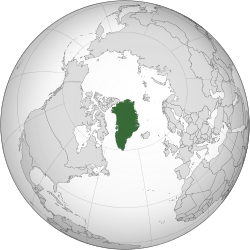



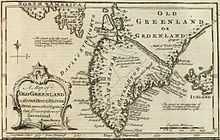
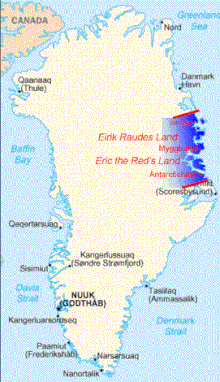






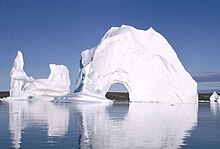
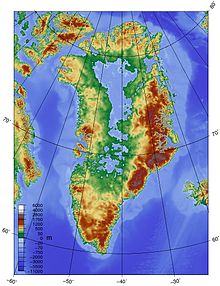





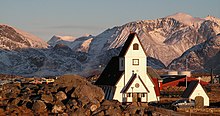
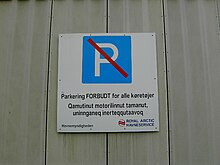



Nenhum comentário:
Postar um comentário